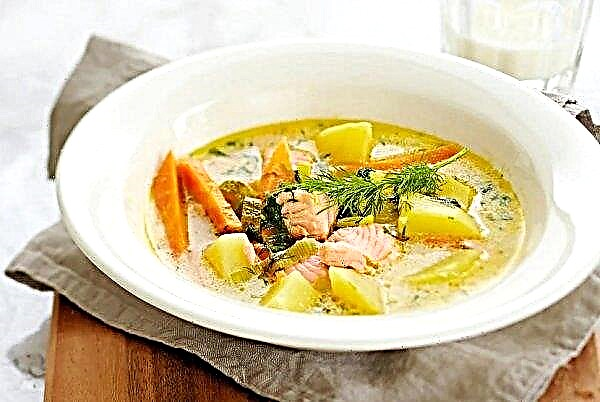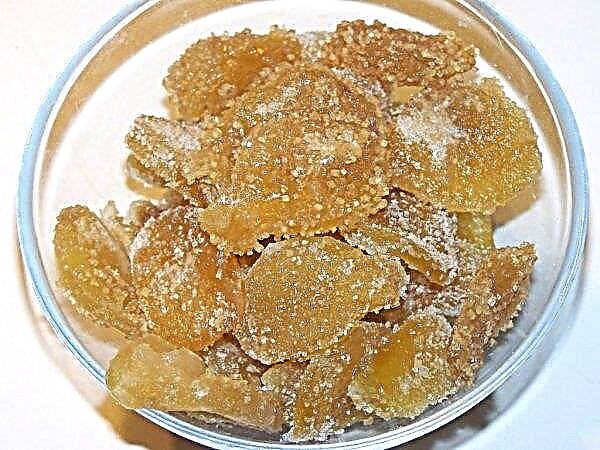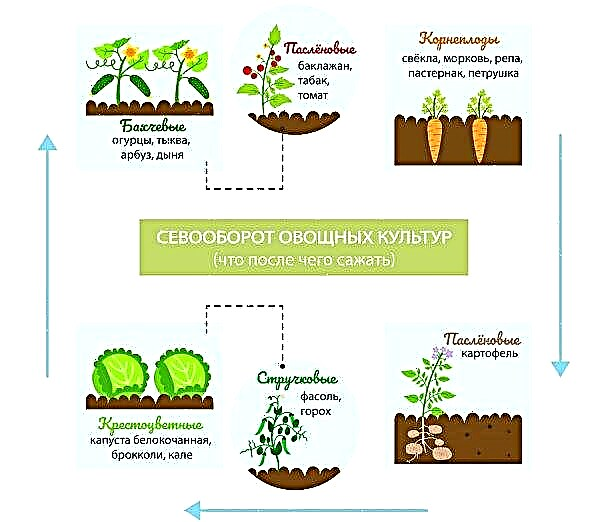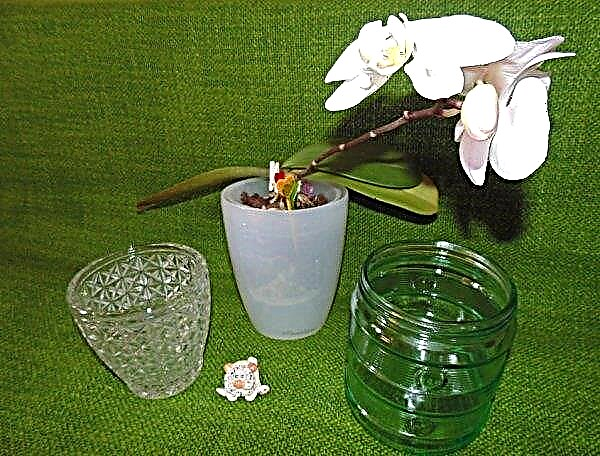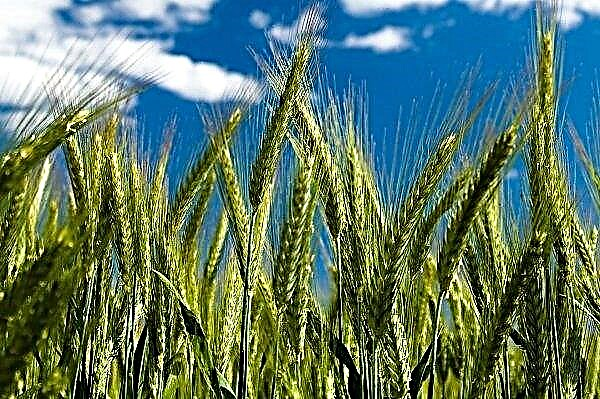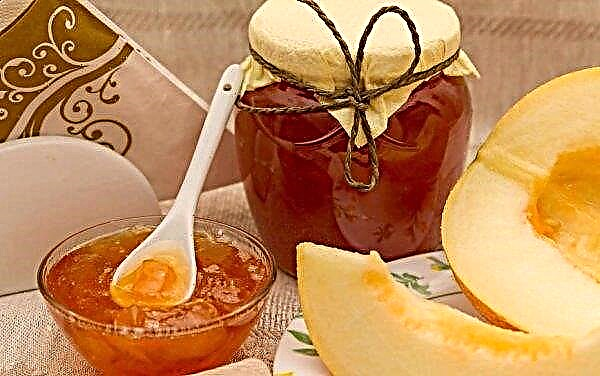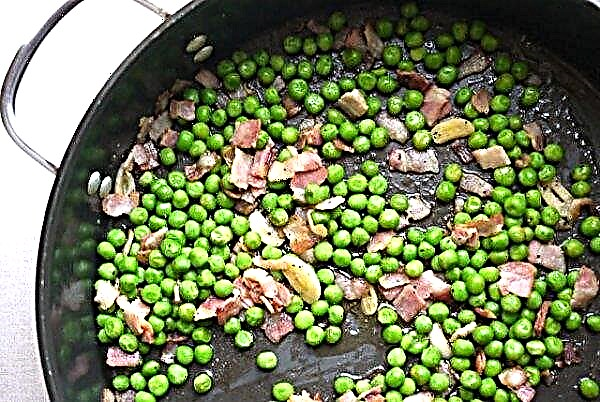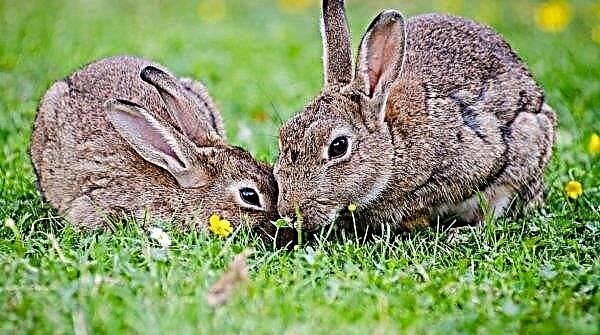There are different breeds of chickens: some grow quickly and give a lot of meat (meat), others carry a large number of eggs (egg). But there are breeds that make up the middle ground between them - these are meat and egg chickens. They combine high egg production and high weight. Features of the content of these rocks we will discuss in our article.
List of breeds of meat and egg productivity
Meat and egg chickens are represented by such breeds: Kuchinsky, Leningrad chintz, Foxy Chik, Zagorsk salmon, Liven chintz, Maran, Dominant, Australorp, Amrox, Welsumer, Pushkinskaya and Lakenfelder. Next, we consider their characteristics.
Kuchinsky
Layers have a fleshy torso and short legs. The weight of the rooster is 4.5 kg, the chicken 3 kg. Birds carry more than 200 eggs per year, starting from six months of age. The shell of eggs is brown in color with a pink tint. The color of the feathers is golden brown or light brown.
The main quality of the breed is very good tolerance of weather changes: its representatives quickly get used to cold weather in winter and heat in summer. The level of their egg production does not fall even in the most severe frosts. Hens can run in an uninsulated chicken coop.
In addition, hens are not inherent in colds. Chickens also have very strong immunity, so their deaths are rare. The survival rate of chickens is 98% - this quality increases the value of the breed in relation to others. It is worth noting that adult laying hens are sensitive to their offspring, and chickens quickly gain weight.Hens of this breed are undemanding in content and very calm. If they are well looked after, they may well become tame.Important! Kuchin laying hens are often obese, so their diet should be balanced. Do not overfeed them for the night: obese birds will decrease egg production, and soon they will cease to rush at all.
Leningrad chintz
First of all, layers are distinguished by their beautiful plumage: each feather in them consists of white, black and brown colors. The weight of an adult male is 2.7 kg, and that of a female is 2 kg. Gourmets really appreciate meat: it is very delicate in taste, aromatic and juicy. The egg production rate of this breed is 180 eggs per year.
Chickens quickly adapt to weather changes. But despite this, make sure that the coop is stable and warm. Keep the temperature in it not lower than +10 ° С. In winter, the floor in the chicken coop needs to be covered with sawdust or hay so that the birds do not catch their feet. It is also important that there are no drafts inside the house - this will help to avoid chicken diseases.Calcium must be present in the diet of this breed for the eggs to be strong - to do this, provide them with the opportunity to peck small pebbles or shells every day. You can also introduce calcium into the food of laying hens. In addition, birds should receive a sufficient dose of protein. Its deficiency will adversely affect the quality of meat.
Foxy chick
Birds are low, with a wide sternum and thick plumage of a red and light brown color. At the age of 4 months they begin to rush. The egg production of the breed is very high - 300 eggs per year with a characteristic light pink color.
Foxy chickens are large in size. An adult rooster weighs 6 kg and a chicken weighs 4 kg. Their dietary meat, which is very much appreciated in the market. Another huge plus is the 100% survival rate of chickens, so it is easy to grow them.
As for the conditions of detention, the birds are unpretentious. Due to the presence of high-quality plumage, they tolerate cold temperatures well in winter. The only caveat is the obligatory straw litter on the floor, which will protect the feet of the birds from hypothermia.Important! To prevent egg laying in laying hens, carefully monitor their diet. Food should be three meals a day and include vegetables, fruits, vitamin supplements.
Zagorsk Salmon
These are medium sized birds. The weight of the rooster is 3.7 kg. Adult layers weigh 2.7 kg. One chicken can lay up to 260 eggs per year, starting at the age of five months. Shell color - cream or light brown.
Features of the bird of this breed:- they are hardy and quickly get used to changes in temperature;
- very rarely get sick, because they have strong immunity;
- they can be grown together with representatives of other breeds, because they have a good character;
- chickens grow quickly, they are characterized by a high level of survival.
The birds are almost omnivorous and very active, so you need to protect the garden and the garden from laying hens, as they can ruin the plantings. And you also need to avoid the lack of food from chickens.Important! In the chicken coop or on the area for walking, there should be a container with sand - this is a very important part of the laying hen's diet. Sand improves the digestion process of chickens: with its help, food in their stomach is better ground.
Liven chintz
Outwardly, the layers are very large, with a wide chest, a long back and a short neck. The color of the feathers can be different: yellow, black and white, black, silver, golden.
Chicken of this breed carries 200–220 eggs per year, starting at the age of 6 months. It should be noted that the color of the shell is brown. The number of eggs does not decrease in winter, when there are large frosts on the street. In addition, the eggs have a delicate taste, which is very appreciated by gourmets. The meat of these birds has wonderful taste qualities.Livenki well tolerate winter frosts. Adult hens can overwinter in an unheated chicken coop. They need heat during the period of active growth due to the long plumage process. Also, birds have high immunity - they rarely get sick, so chickens grow viable.Did you know? The name of the breed came from the chintz color of the birds, which today prevails in comparison with other colors.
Birds are unpretentious in food. But in winter, you especially need to make sure that they get a lot of vitamins: for this, they dry fruits, vegetables and use other vitamin supplements.
Maranas
Features of the breed:
- birds are large in size, with a long body and strong legs;
- the weight of an adult rooster does not exceed 4 kg, and females - 3.2 kg;
- one chicken carries 150 eggs per year;
- they are very active, so take care of the presence of a large space for birds;
- laying hens do not tolerate high humidity, so you need to ensure that the chicken coop is dry;
- hens are unpretentious in food;
- in the diet of maranas there should be a lot of greens so that their egg production does not decrease;
- so that the eggshell is strong, be sure to use a calcium supplement for chickens.
Important! The eggshell of the maranas is very strong, and care must be taken to ensure that chickens that could not break through on their own do not die. If you observe this situation, help the chicks get out.
Dominants
Layers have an unusual appearance due to low legs that make them squat. The chickens are quite large: the weight of the rooster reaches 3 kg, and the laying hens - 2 kg. One chicken can lay 310 eggs per year, which is a very high rate.
Hens are unpretentious to habitat conditions. They tolerate both great heat and severe frosts. The level of dryness and humidity in the chicken coop also does not have much significance - dominants tolerate any conditions of detention well.Australorp
Chickens are grown on many farms. Layers stand out among other breeds with black feathers. They carry 300 eggs per year. Upon reaching the age of two, the egg production of individuals decreases, then the laying hens are sent for slaughter. It is worth noting that chickens have a fairly large weight: a rooster weighs 4 kg, and a chicken - 3 kg.
Layers quickly get used to new climatic conditions. The chicken coop should be warm, without drafts. It is important to provide the chickens with good ventilation - this will prevent the appearance of various bacteria in the house. Also, laying hens are not picky in their diet, but vitamin supplements must be included in their diet to improve digestion. In the chicken coop, there should always be a container of a mixture of ash and sand, so that hens can bathe in it regularly. So they clean their plumage from contaminants and bacteria, and their appearance becomes even better.Did you know? This breed was developed back in 1890 in Australia. Then it became popular in America, and eventually over the world. The name of the breed came from the mainland on which it appeared.
Amrox
Chickens are beautiful in appearance due to their cuckoo plumage. They are large in size, wide in the chest, with a long neck. The weight of the rooster is 4.5 kg and the chicken is 3.5 kg. Egg production - 180 eggs per year.
These chickens are characterized by high survival. They quickly adapt to new conditions and are calm in nature, so laying hens can be kept in the same room with other breeds. Due to its unpretentiousness, this breed is most often recommended to grow for beginner poultry farmers.
The chicken coop for this breed should be well-lit and insulated to avoid bird diseases.You need to monitor the balanced diet of chickens. Fill the diet of laying hens with vitamins (include greens, fish oil, dairy products, etc.), and this will positively affect the egg production and appearance of the birds.
Welsumer
It is the oldest breed in Europe. Its representatives are tall and large, they are characterized by a rusty-grouse coloring of plumage. In the first year of life, they carry 160 eggs, then the egg production drops to 120 eggs per year. The eggshell is unusual - rough, dark red-brown shades.
The weight of the laying hens is average: roosters reach 3.5 kg, and hens - 2.5 kg. Layers tolerate cold well, they can winter in an unheated chicken coop. To ensure that the hens fully grow without reducing egg production, you need to monitor the balance of their nutrition. The diet should be vitamin supplements, herbs, cereal mixtures and more.Hens Welsumer are calm. They easily get along with representatives of other breeds. Thanks to calm and non-bullying, they can be accustomed to hands.
Pushkin
Hens have a beautiful color. Layers are striped-motley, and roosters are white with dark spots along the body.
The weight of the birds is small: males - 3 kg, and females - 2 kg. Chickens carry from 220 to 290 eggs per year, starting from 5.5 months. The level of egg production depends on the amount of vitamins in their diet. It should consist of herbs, vegetables, chalk, vitamin supplements.
Layers tolerate cold well due to the dense feather cover. They are also undemanding in conditions of detention. Their chicken coop should be warm and free of drafts to prevent the occurrence of poultry diseases.Important! In order to avoid conflicts among birds, make sure that the herd has such a sexual ratio - 1 rooster per 25 chickens. In no case do not keep more cocks for so many layers.
Lakenfelder
The birds are very beautiful in appearance: they are stately and voluminous due to the magnificent plumage. Roosters have a long neck and tail, which makes them more magnificent. The black neck and tail contrast sharply with the white torso.
The weight of the birds is small: roosters reach 2.2 kg, and laying hens - 2 kg. The egg production rate is 180 eggs per year; under improved conditions, it can increase.These chickens need to provide a lot of space for walking. They can walk in the heat and in frost, because they tolerate temperature changes well.
The diet of laying hens should be carefully monitored: for this it is recommended to buy ready-made balanced feed and vitamin supplements, due to which the laying of chickens increases.Important! Lakenfelder chickens are very rare in farms, in addition, it is more difficult to care for them than for laying hens of other breeds. Therefore, it is better for novice breeders to wait a bit with this rare breed and first try their hand at breeding more undemanding chickens.
Breeding of chicken meat and egg breeds
To breed laying hens of meat and egg breeds, you need to know the following provisions:
- they begin to lay eggs early (aged 4–5 months);
- most breeds are small in weight, but their meat is very tasty, which is appreciated by gourmets;
- the poultry diet should include a sufficient amount of vitamins so that its egg production does not decrease;
- chickens should have free access to fresh water;
- you need to take care of a warm house without drafts, with straw bedding. It must be kept dry, clean and avoid excessive humidity;
- laying layers of these breeds have high immunity, therefore, chickens have almost one hundred percent survival;
- if you are a novice breeder, first breed more undemanding chickens to gain experience in this matter;
- Allow enough space for all the hens to walk. It is an additional source of vitamins for poultry.
 Breeding chickens is both an exciting and responsible business. To achieve success in it, you need to make a lot of effort. But if you diligently follow all the recommendations for caring for laying hens, they will thank you with high egg production and high weight.
Breeding chickens is both an exciting and responsible business. To achieve success in it, you need to make a lot of effort. But if you diligently follow all the recommendations for caring for laying hens, they will thank you with high egg production and high weight.

